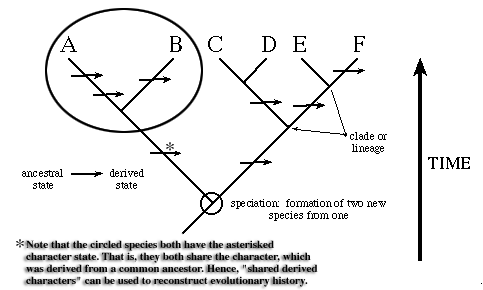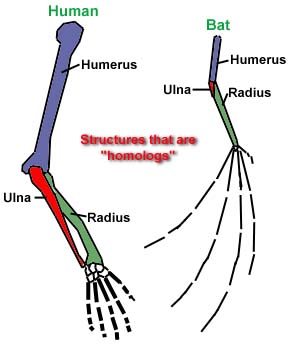
The Jason Project has asked you to make a diagram for them using 'shared derived characteristics.' What does that mean? Here's a list of terms that Evolutionary Biologists use!
Character: an attribute the organism has. A typical character for an animals
might be eye color; for plants, it might be petal number.
Character state: one of two or more forms of a character. Animals might have
"red" or "black" eyes; plants might have "three" or
"four" petals.
When scientists speak of a character being "derived," they mean it has changed compared to the old, or "ancestral," character. The new character state is shared by all the related organisms that evolve after that point in time. So, in order to make a diagram based on "shared derived characters," you will need to look at the group of organisms and make a list of their characters and their character states. An example of how to do that can be found on the "How Do I Do That" page.
Cladogram: what scientists call an evolutionary tree. Here's an example of a cladogram:

The Jason Project wants you to take the six critters they found and make a diagram that looks like this. Help constructing a cladogram using critters can be found on the "How Do I Do That" page.
Evolution: In the biological sense, it is descent with modification. The cladogram above has an implied timeline along its branches, with parents passing genetic information (sometimes altered genetic information) to their offspring over time. "Descent" means that all living organisms arise from previously existing organisms (no "spontaneous generation"). What is "modified" is the DNA of the population undergoing evolutionary change. It is important to remember that individuals do not evolve. Groups or populations containing individuals are what evolve.
Homology: Scientists use physical structures to reconstruct evolutionary history. They can do this because similarity between structures is due to common ancestry. This similarity is called "homology." The arm of a primate and the wing of a bat are examples of homologous structures. The bones have been modified from a common ancestor to perform different functions, but can still be recognized as a humerus, a radius or an ulna.

Speciation: When a single species splits into two species, usually as the result of a new character state developing.
| Home | How do I do that? | What does that mean? | Teacher's Page | Show what you know! | Web Resources |